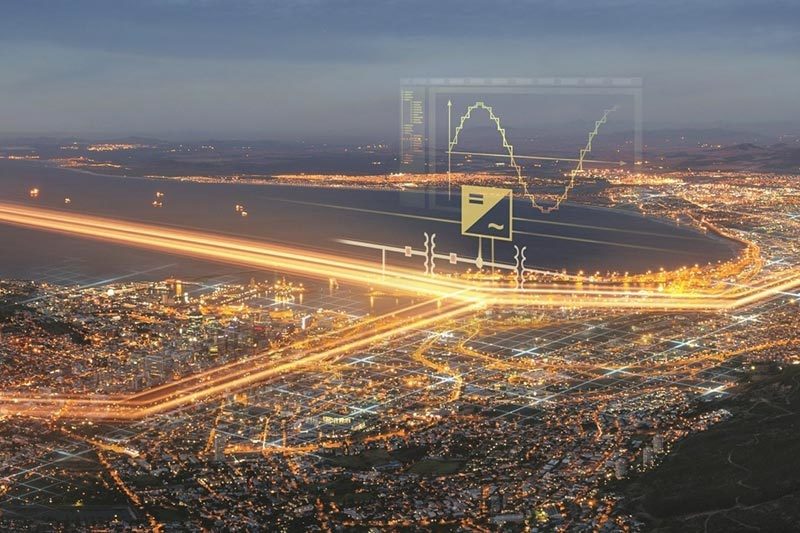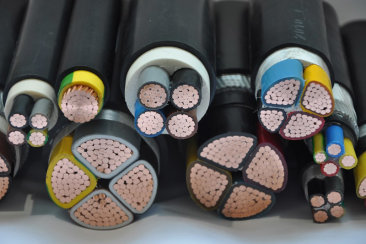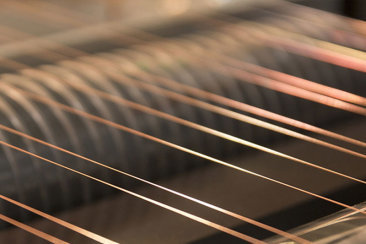28
2023-08
How to choose heat-resistant and high-temperature wires and cables
Generally, wires and cables are insulated with plastic and rubber sheaths, which are conventional engineering materials with abundant sources and can meet large-scale production, and the cost is relatively low. However, for some special industries such as petrochemicals, steel, aerospace, shipbuilding, military industry, pharmaceuticals, food, plastic machinery, boilers, and other industries related to heat and high temperature, wires and cables that can withstand certain high temperatures are required. Ordinary wires and cables are obviously not suitable for use, and wires and cables that can withstand high temperatures are needed to ensure the safe operation of their power and signals. With the rapid development of China's economy, the demand for high-temperature cables in the special industry has shown a rapid growth stage. Heat resistant and high-temperature cables grow at a rate of 20% annually. As an important component of special cables, high-temperature cables have strong vitality and supply is in short supply. China imports about 2 billion yuan from abroad every year for domestic construction. The International Electrotechnical Commission (IEC) generally defines the heat resistance level of insulation as follows: Heat resistance grade YAEBFHC *High allowable working temperature/℃ 90105120130155180 ≥ 180 The insulation and sheath of our ordinary wires and cables are made of ordinary engineering rubber and plastic as basic resins, but the requirement is insulation grade. Common rubber materials used for cables include butadiene rubber, ethylene propylene rubber, natural rubber, and chlorosulfonated polyethylene, with a working temperature of (60-75) ℃; Common plastic materials used for cables include polyvinyl chloride, polyethylene (including cross-linked polyethylene), and polypropylene, with a working temperature of (70-90) ℃. It can be seen that these cables are not strictly heat-resistant or high-temperature cables. Heat resistant cables generally refer to cables with temperatures ranging from 90 to 155 ℃ and below, while high-temperature cables refer to cables with temperatures ranging from 180 ℃ and above. To solve the problem of ordinary cables not being able to withstand high temperatures, it is necessary to improve the materials or use insulation grade materials that can withstand high temperatures.
2023-08-28
28
2023-08
The difference between environmentally friendly cables and low smoke halogen-free cables
Low smoke and halogen-free cables are often used in many key projects, such as fire protection, monitoring, and alarm systems. They are commonly referred to as environmentally friendly cables, but in fact, environmentally friendly cables do not refer to low smoke and halogen-free cables. The following is a detailed analysis of the differences between environmentally friendly cables and low smoke and halogen-free cables: 1. Halogen free: The use of green and environmentally friendly insulation layer, sheath, and specially made oxygen barrier material not only has good electrical and physical mechanical properties, but also ensures that the product does not contain halogens, solves the "secondary pollution" formed during combustion, and avoids the carcinogenic "dioxin" substances produced by traditional PVC wires during combustion. 2. High flame retardancy: Environmentally friendly cables fully guarantee their high fire safety requirements for buildings. In the event of a fire, cables are not easily combustible and can prevent the spread of flames and the expansion of disasters after combustion. 3. Low toxin: The insulation and sheath do not contain heavy metals such as lead and cadmium that are harmful to human health, and will not cause pollution to soil and water sources during cable use and disposal. And after rigorous toxicity experiments, the white mice were unharmed under the prescribed experimental conditions. 4. No corrosive gas generated: The use of new special coating materials that are environmentally friendly does not produce gases such as HCL during production, use, and combustion. It emits very little acid gas and causes minimal damage to personnel, equipment, and instruments, making it more environmentally friendly. 5. Waterproof and UV resistant: Green and environmentally friendly materials with special molecular structures are used to ensure ultra-low water absorption. Special UV absorbers give the product excellent UV protection. This ensures the safety and prolongs the service life of this type of product* The first company to initiate the name "environmentally friendly cable" was a Japanese company, which established the FN (Economic) ecological cable standard as its product standard. Western countries such as the UK also developed advanced requirements for environmentally friendly cable standards, which gradually spread to the world. 6. High transmittance: The smoke generated during cable burning is extremely thin, which is beneficial for personnel evacuation and firefighting work. The product has a light transmittance of over 40%, far exceeding the standard of less than 20% for traditional flame retardant cables.
2023-08-28
28
2023-08
Characteristics and usage scenarios of several fire-resistant and flame-retardant cables
1. NH-YJV: Fire resistant cross-linked polyethylene insulation, polyvinyl chloride sheathed power cable It can be laid indoors, in tunnels, and in pipelines, and can withstand certain laying traction, but the cable cannot withstand external forces. Single core cables are not allowed to be laid in magnetic material pipelines. If it needs to withstand mechanical external forces, it is necessary to wrap steel strip armor. Suitable for special requirements, such as large capacity power plants, nuclear power plants, underground railways, high-rise buildings, etc. 2. YJV: Crosslinked polyethylene insulation, polyvinyl chloride sheathed power cable It can be laid indoors, in tunnels, and in pipelines, and can withstand certain laying traction, but the cable cannot withstand external forces. Single core cables are not allowed to be laid in magnetic material pipelines. If it needs to withstand mechanical external forces, it is necessary to wrap steel strip armor. 3. ZR-VV: Flame retardant PVC insulated and PVC sheathed power cables Can be laid indoors, in tunnels, cable trenches, pipelines, flammable and severely corrosive areas, but cannot withstand mechanical external forces. If it needs to withstand mechanical external forces, it is necessary to wrap steel strip armor. Features: In the case of open flame combustion, remove the ignition source and automatically extinguish within ≤ 12 seconds. 4. ZR-YJV: Flame retardant cross-linked polyethylene insulation, polyvinyl chloride flame retardant sheathed power cable It can be laid indoors, in tunnels, and in pipelines, and can withstand certain laying traction, but the cable cannot withstand external forces. Single core cables are not allowed to be laid in magnetic material pipelines. If it needs to withstand mechanical external forces, it is necessary to wrap steel strip armor. Features: In the case of open flame combustion, remove the ignition source and automatically extinguish within ≤ 12 seconds. 5. NH-VV: Fire resistant PVC insulated and PVC sheathed power cables Can be laid indoors, in tunnels, cable trenches, pipelines, flammable and severely corrosive areas, but cannot withstand mechanical external forces. If it needs to withstand mechanical external forces, it is necessary to wrap steel strip armor. Suitable for special requirements, such as large capacity power plants, nuclear power plants, underground railways, high-rise buildings, etc.
2023-08-28






